This article was medically reviewed by Theodore Leng, MD. Dr. Leng is a board certified Ophthalmologist and Vitreoretinal Surgeon and an Assistant Professor of Ophthalmology at Stanford University. He completed his MD and Vitreoretinal Surgical Fellowship at Stanford University in 2010. Dr. Leng is a Fellow of the American Academy of Ophthalmology and the American College of Surgeons. He is also a member of the Association for Research in Vision and Ophthalmology, the Retina Society, the Macula Society, the Vit-Buckle Society, as well as the American Society of Retina Specialists. He received the Honor Award by the American Society of Retina Specialists in 2019.
There are 9 references cited in this article, which can be found at the bottom of the page.
This article has been viewed 124,160 times.
Parents often struggle to deliver eye-drops to their babies or children with pink eye (conjunctivitis) and other eye ailments. Children instinctively fight against anything put into their eye. They may become upset or restless, but with a little know-how, there are many ways to calm your child while giving them their medicine.
Steps
Preparing Your Child and the Eye Drops
-
1Gather all the necessary materials first. The faster you apply the drops, the easier it will be, especially if you have a distressed or squirming child. Make sure that you have within reach the medicine, tissues, and washcloths, as well as any pillows or towels you will be using to prop up the child’s head.[1]
-
2Reduce distractions. Children can be easily distracted. Since you will want them to keep their gaze steady while you apply medicine, make sure that there are no distractions in the room. This means that the television should not be on, nor should there be any nearby activity that will catch their gaze.[2]Advertisement
-
3Explain to your child what the medicine does. If your child is old enough to talk, explain in simple terms that you will be putting medicine in their eye. Tell them that while it may sting or feel cold at first, it will help them feel better afterwards. Warn them that their vision will be blurry, and discourage them from touching their eye afterwards.[3]
-
4Put a drop on the back of their hands. If you show them ahead of time that the medicine is safe and harmless, they will not fight as much while you apply the eye drops. You can reduce their anxiety by placing a drop on the back of their hand. While you do this, point to your eye, and tell them that you will be quickly dropping it there.[4]
-
5Show them how the drops will go in. Using a harmless eye lubricant, you can show them what will happen by applying eye drops to yourself. Using the applicator, tip your head back and put one drop into your eye. Blink. The calmer you are while doing this, the calmer your child will be as you do it to them.[5]
- Do not use your child’s medicine for this purpose. Use a drugstore eye drop, particularly one designed for hydrating dry eyes.
-
6Reward your child. Promise your child a treat if they are able to take the eye drops well. Inform them that they must sit still, and they cannot cry. You should give them a small reward, such as a piece of candy.[6]
-
7Let the medicine warm to room temperature. If you have eye drops that are kept in the refrigerator, you should remove the bottle beforehand so that it can come to room temperature. To quicken this process, you can roll the bottle between your hands until it is warm.[7]
-
8Wash your hands. The best way to prevent the spread of disease is to wash your hands before and after you give your child medicine. This is especially important with eye diseases, which are very infectious. Wash your hands with warm water and soap before drying them completely on a clean towel.[8]
- You can also wear gloves while applying the medicine to be extra cautious. You should still wash your hands before putting on the gloves.
-
9Clean the outside of the eye. If your child has crusty or gooey buildup around the eye, you will first need to clean this area. Wet a cotton ball or clean washcloth. Gently wipe the eye from the nose outward. Use separate cloths for each eye to prevent reinfection. Wash your hands after finishing.[9]
Giving Eye Drops to a Baby
-
1Swaddle the baby in a blanket. This will restrain the baby’s arms. Otherwise, the baby might flail or rub away the medicine. By swaddling them, you will be ensuring that they remain still throughout the procedure.[10]
-
2Lay the baby flat on their back. It is easiest to place the baby on your lap. Make sure that their head is closest to you with their body extended out along your legs.[11]
-
3Pull down on their lower lid. With a finger, press down on the skin below their eye and gently pull it down. You only want to pull down enough to expose the lower whites of their eye. There should be a small gap for the medicine to go in. Be extremely gentle as you do this. You do not want to upset the baby, nor do you want to injure them.[12]
- If the baby is upset or wiggling, ask another adult to help. They can help hold the baby's head still while you quickly put the drops in. This will also free your hands to help with applying the drops.[13]
-
4Drop the prescribed medicine into their eye. Bring the dropper within one inch of their eye, but make sure that it is not touching any part of the eye, including their eye lashes. Squeeze the medicine along their lower eyelid. As they blink, watch to make sure that the medicine touches their eye.[14]
-
5Apply the medicine while their eyes are closed. If you are having difficulty putting the medicine into their eyes while they are open, you can try applying the medicine while their eyes are closed. This can be done while they are asleep. Drop the medicine into their closed eye along the corner closest to their nose.
- If your baby opens their eyes, it will run into their eyeballs.
- If they do not open their eyes, you can open their eyes for them. With your index finger resting on their brow and your thumb on their cheek, gently pull open their eyelids so that the medicine runs in.
-
6Wipe up the excess with a tissue. Once you are certain that the medicine has reached their eyeball, you may clean up any excess that has dripped around their eyes. Use a tissue to gently remove the liquid from the lower and upper lid, eye lashes, and cheek. Do not touch their eyeball.
Giving Eye Drops to a Young Child
-
1Place your child on their back, and tilt their head back. They should be facing up towards you. Place a pillow under their shoulders or a rolled-up towel under their neck, so that their head droops back.[15]
-
2Ask them to look up towards their forehead. If they are squirming or having difficulty keeping their gaze upwards, you may distract them by holding up a toy. Ask them to focus on the toy to keep their eyes looking up. This will allow the medicine to run easily into their eyes.
-
3Pull down on their lower lid. You may rest your finger on their cheek, and with extreme care, gently pull down the lid to expose the lower white of their eye. You want to create a small space for the medicine to enter their eye.[16]
-
4Squeeze the prescribed amount of drops into their eye. Without the dropper touching their eye, drop the medicine along their lower eyelid and their eyeball. In this method, you want to make sure it does not pool in the tear ducts, along the inner corner of the eye. [17]
-
5Ask the child to blink. They may need to blink once or twice. Alternatively, you could ask them to keep their eyes closed for ten seconds before opening again. Ask them not to rub their eyes.
-
6Wash both your hands and your child’s hands. Now that the process is over, you should make sure that everyone’s hands are clean to prevent the infection from spreading. Frequent hand washing can dramatically cut down on spreading further infection
- Wash your hands for at least 20 seconds with soap and warm water.
Giving Eye Drops to an Upset Child
-
1Lay the child with their head between your thighs and their arms under your legs. This will help restrict the child's movements while giving you free use of both hands. Do not sit on their arms, but apply gentle pressure with your thighs. This will also keep their head relatively still. The goal is to quickly drop in the medicine while they are restrained. [18]
-
2Wait for their eyes to close. If they are thrashing and crying, it may be difficult to open their eyes. If they are not cooperating, you can apply the medicine to their closed eyes. Watch for when their head is still and their eyes are closed for longer than a second before applying the drops.
-
3Place the drops right next to the tear duct of the eyelids. This is the corner of the eye closest to the nose. Use the prescribed number of drops. The drops will pool along the tear duct. Do this as quickly as possible, and they may not even realize that you have have done it.
-
4Wait for the child to open their eyes. The medicine should roll into their eyes. If it does not, you can have the child tilt their head until it does. If the child is hesitant or won’t open their eyes, just wait — eventually the eyes will open. When the child opens their eye, the drops will partially roll in.
- If they refuse to open their eyes, place your index finger on their upper eyelid and your thumb on the lower. Gently pry open the eye so that the medicine can run in.
- If the medicine does not touch their eyeball, you may need repeat the process. The closed eye method, although it can work for squirming children, is not as effective as applying the medicine directly to the eye.
-
5Wipe away the excess. With a tissue, gently remove any excess medication from their eyelids. Wash your hands immediately afterwards. Remember to wash your child’s hands as well.
Warnings
- Eye infections are particularly contagious. If you have more than one child with an eye infection, use separate wash cloths and eye applicators.⧼thumbs_response⧽
- Eye drops can expire, and the applicator can become infected. Once the child has recovered, throw away the eye drops. Eye drops should not saved for more than four weeks, and you should not use the same applicator on different people.⧼thumbs_response⧽
Things You'll Need
- Medicine with eye drop applicator
- Tissues
- Soap
- Washcloth
References
- ↑ https://blog.chocchildrens.org/tips-make-eye-drops-easier-kids-parents/
- ↑ http://www.ncbi.nlm.nih.gov/pmc/articles/PMC2873669/
- ↑ http://www.ncbi.nlm.nih.gov/pmc/articles/PMC2873669/
- ↑ http://www.ncbi.nlm.nih.gov/pmc/articles/PMC2873669/
- ↑ http://www.todaysparent.com/blogs/the-good-sport/5-steps-for-giving-your-child-eye-drops/
- ↑ http://www.todaysparent.com/blogs/the-good-sport/5-steps-for-giving-your-child-eye-drops/
- ↑ https://www.healthychildren.org/English/safety-prevention/at-home/medication-safety/Pages/How-to-Give-Eye-Drops-and-Eye-Ointment.aspx
- ↑ http://www.ncbi.nlm.nih.gov/pmc/articles/PMC2377385/
- ↑ https://www.healthychildren.org/English/safety-prevention/at-home/medication-safety/Pages/How-to-Give-Eye-Drops-and-Eye-Ointment.aspx
- ↑ http://www.ncbi.nlm.nih.gov/pmc/articles/PMC2873669/
- ↑ https://blog.chocchildrens.org/tips-make-eye-drops-easier-kids-parents/
- ↑ http://www.mayoclinic.org/drugs-supplements/ofloxacin-ophthalmic-route/proper-use/drg-20065155
- ↑ https://www.youtube.com/watch?v=d3wtEWX7HxU&feature=youtu.be&t=100
- ↑ https://www.gosh.nhs.uk/conditions-and-treatments/medicines-information/how-give-your-child-eye-drops/
- ↑ https://www.gosh.nhs.uk/conditions-and-treatments/medicines-information/how-give-your-child-eye-drops/
- ↑ http://www.mayoclinic.org/drugs-supplements/ofloxacin-ophthalmic-route/proper-use/drg-20065155
- ↑ https://www.healthychildren.org/English/safety-prevention/at-home/medication-safety/Pages/How-to-Give-Eye-Drops-and-Eye-Ointment.aspx
- ↑ https://www.healthychildren.org/English/safety-prevention/at-home/medication-safety/Pages/How-to-Give-Eye-Drops-and-Eye-Ointment.aspx



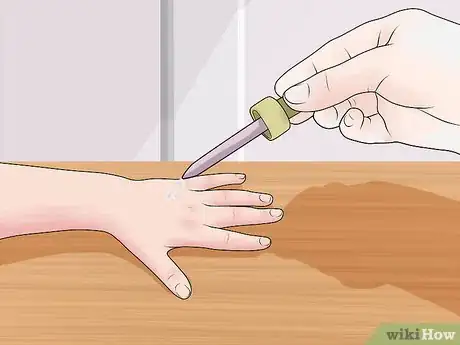
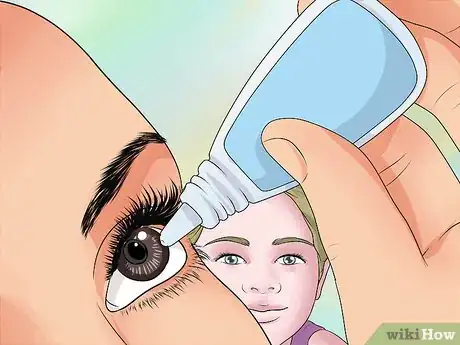

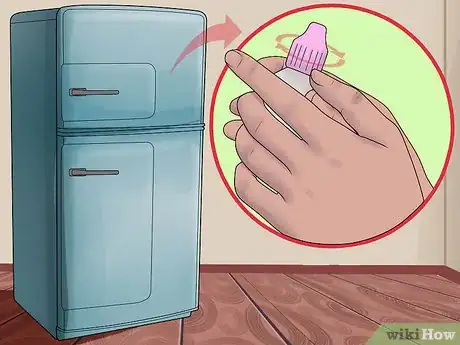
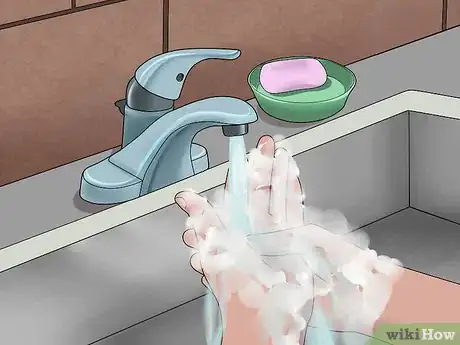
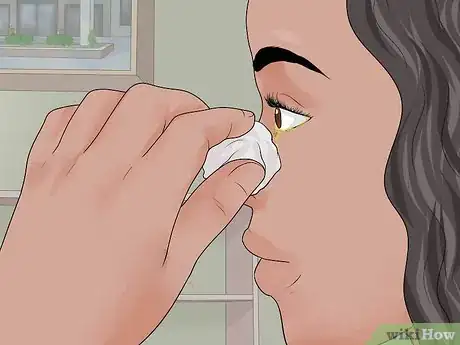
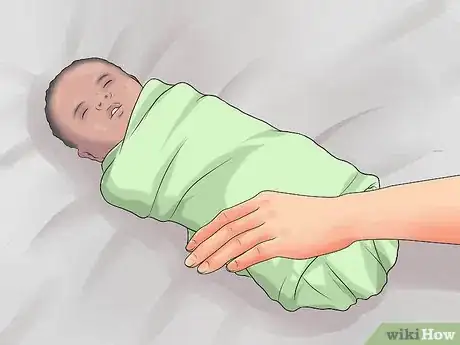
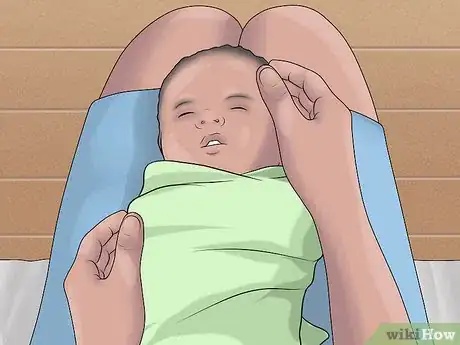
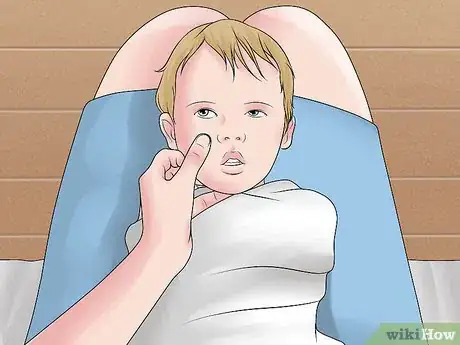
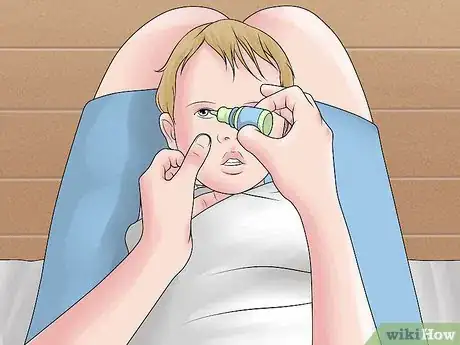

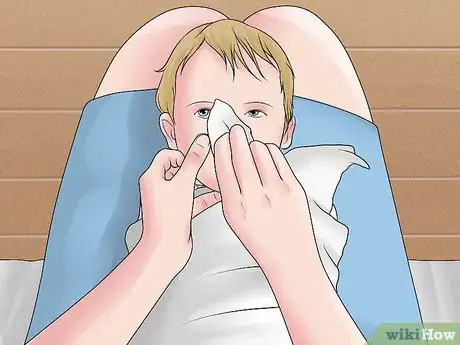
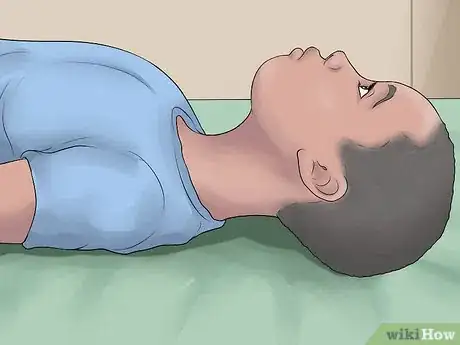

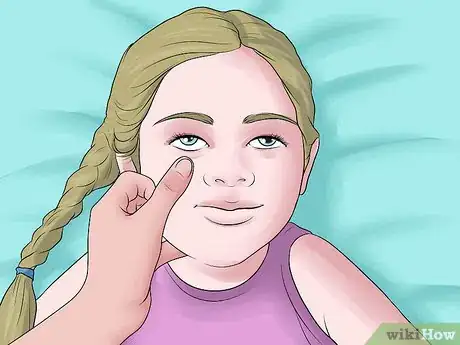
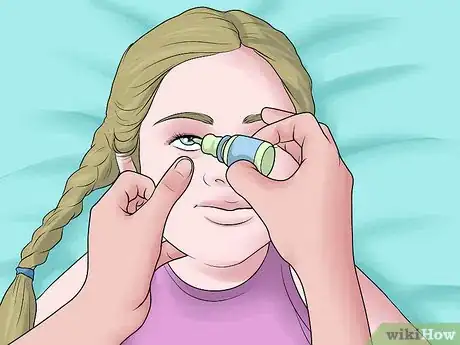
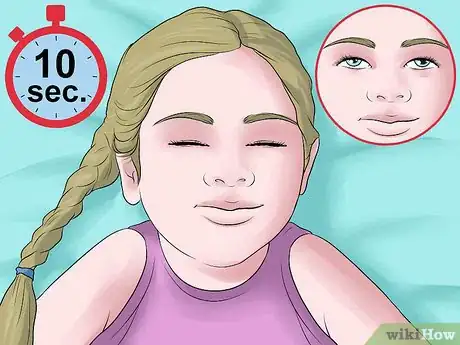
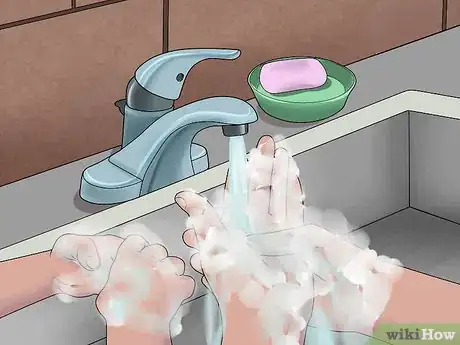
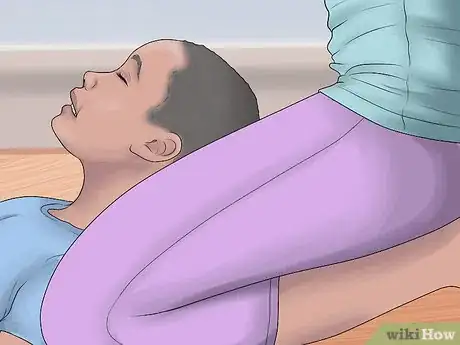
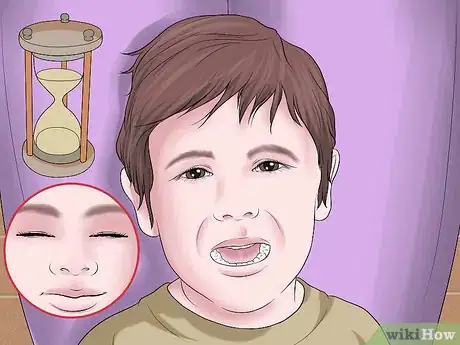





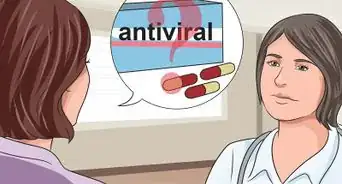


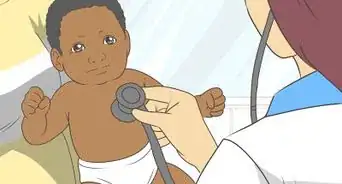

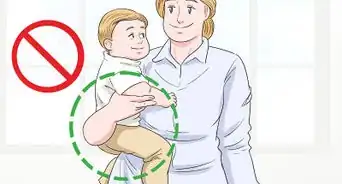



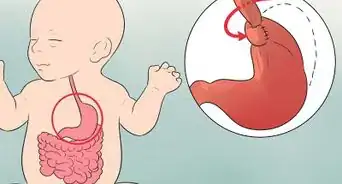
















































Medical Disclaimer
The content of this article is not intended to be a substitute for professional medical advice, examination, diagnosis, or treatment. You should always contact your doctor or other qualified healthcare professional before starting, changing, or stopping any kind of health treatment.
Read More...